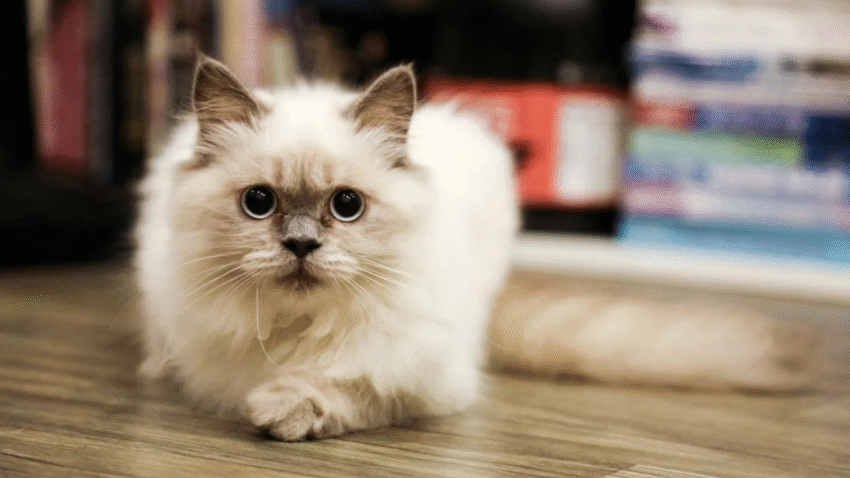Introduction
Worried about your cat in the summer heat? Cats may seem independent and adaptable, but they’re just as vulnerable to heatstroke, dehydration, and sunburn as other pets. In this step-by-step guide, you’ll learn how to protect your cat during hot weather, recognize the signs of overheating, and create a safe, cool environment. Keeping your feline friend comfortable in hot temperatures is easier than you think.
Why Hot Weather Protection Matters for Cats
Cats are known for seeking out sunny spots, but too much heat can put their health at risk—especially if they’re long-haired, overweight, elderly, or have flat faces (like Persians). Unlike humans, cats don’t sweat through their skin; they regulate temperature mostly through grooming and limited sweating through their paw pads. This makes it harder for them to stay cool naturally.
Hot weather can lead to:
- Heatstroke: A life-threatening condition where the cat’s internal temperature rises dangerously.
- Dehydration: Lack of sufficient fluids can affect organ function and energy levels.
- Sunburn: Light-colored cats or those with thin fur are prone to sunburn, especially on the ears and nose.
Cats that spend time outdoors—or live in homes without air conditioning—need extra attention during summer.
Step-by-Step Guide to Protect Your Cat in the Heat
Step 1: Provide Fresh Water at All Times
- Refill water bowls frequently with cool, clean water.
- Place multiple water bowls around the house to encourage drinking.
- Consider a cat water fountain to keep water moving and appealing.
You can even add a few ice cubes to the bowl to keep it cool longer.
Step 2: Keep Indoor Temperatures Comfortable
- Close curtains or blinds during the hottest parts of the day to block direct sunlight.
- Use fans or air conditioning to help circulate cool air.
- Set up cool resting spots with tiles, cooling mats, or damp towels for your cat to lie on.
If you don’t have AC, a fan plus open windows in the early morning or evening can help bring in cooler air.
Step 3: Groom Your Cat Regularly
- Brushing helps remove excess fur that traps heat, especially for long-haired cats.
- Consider a professional grooming session to thin the undercoat safely.
- Don’t shave your cat unless advised by a vet—fur actually protects against sunburn and overheating.
Grooming also helps prevent mats, which can trap heat and moisture close to the skin.
Step 4: Limit Outdoor Time
- Keep your cat indoors during the hottest parts of the day (10 a.m. to 4 p.m.).
- If your cat must go outside, supervise and limit exposure to shady areas only.
- Apply pet-safe sunscreen on exposed areas like ears and nose if your cat is light-colored.
You may also consider a catio or shaded enclosure to let your cat enjoy the outdoors safely.
Step 5: Provide Cooling Treats
- Offer chilled treats like frozen chicken broth cubes or lickable cat treats stored in the fridge.
- You can also freeze a damp cloth in a ziplock bag and place it near their sleeping area.
Make sure your cat is still eating a balanced diet and not skipping meals due to the heat.
Step 6: Watch for Signs of Heat Distress
- Panting or open-mouth breathing
- Excessive drooling
- Lethargy or weakness
- Bright red or pale gums
- Vomiting or collapse
If you notice these symptoms, move your cat to a cooler area, apply cool (not cold) damp cloths to their paws and belly, and contact a veterinarian immediately.
Common Mistakes to Avoid
- Leaving your cat in a hot room or car
Even a few minutes in an unventilated space can lead to heatstroke. Never leave a cat unattended in direct sunlight or a parked vehicle. - Assuming indoor cats are safe by default
Indoor spaces can heat up quickly during summer—especially if ventilation is poor. Always provide cooling solutions indoors too. - Using ice baths or cold water
Sudden temperature drops can shock your cat’s system. Always cool your cat down gradually. - Neglecting sunburn risk
Light-colored cats can burn easily. Use vet-approved sunscreen and limit sun exposure. - Not monitoring hydration
Dehydration can happen even with water nearby if your cat isn’t drinking enough. Monitor water intake and urine output closely.
Extra Tips & Recommendations
- Use a cooling mat: These gel-based mats help regulate body temperature while your cat naps.
- Freeze a water bottle: Wrap it in a towel and place it in your cat’s favorite resting spot for DIY cooling.
- Create a cool hideaway: A cardboard box with holes and a damp towel inside makes a simple, cool den.
You might also like: How to keep your indoor cat active and fit and How to groom a long-haired cat at home for more seasonal cat care.
Conclusion
Your cat depends on you to keep them safe when the weather heats up. With plenty of water, cool spots, limited outdoor exposure, and regular monitoring, you can make summer not only bearable—but enjoyable—for your feline friend. Stay alert to warning signs and take proactive steps to beat the heat together.
